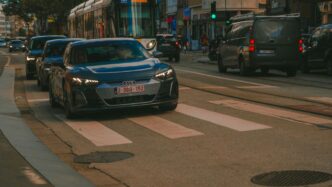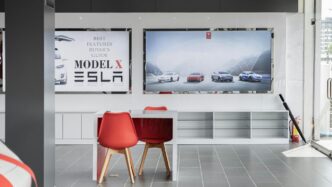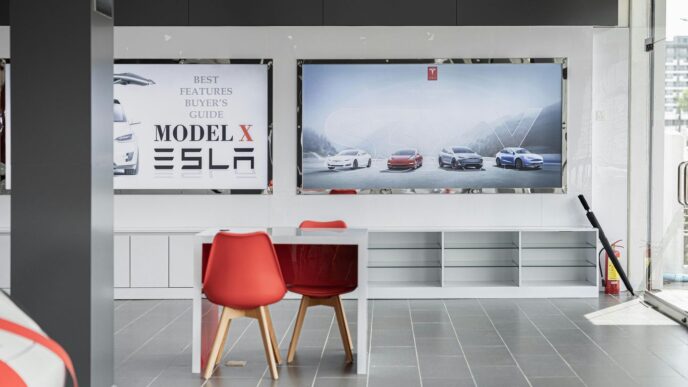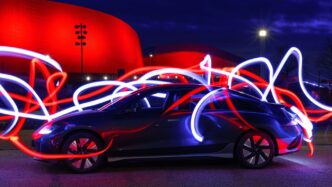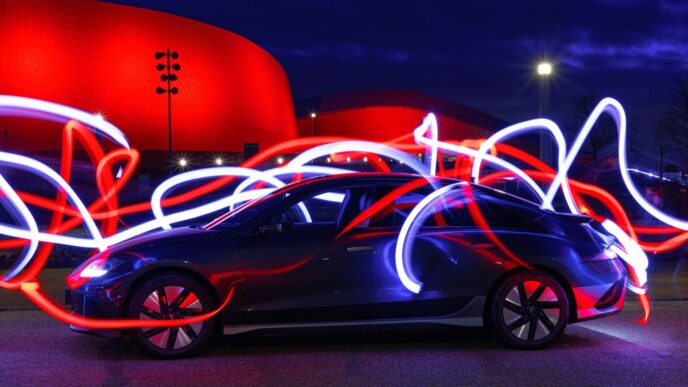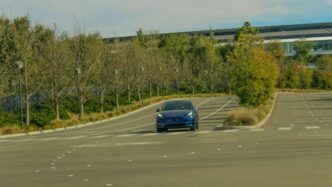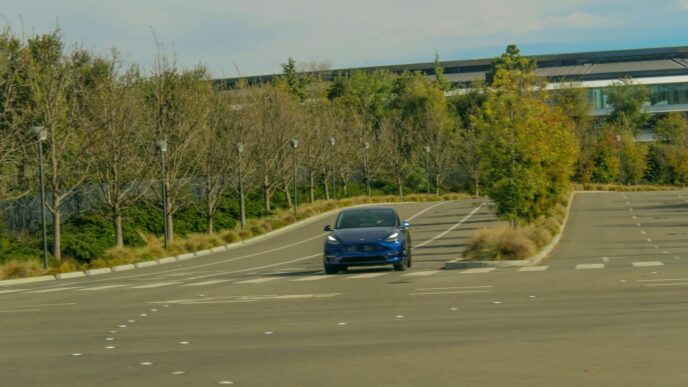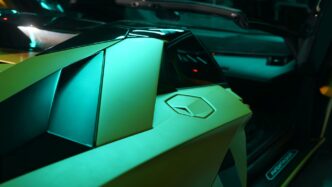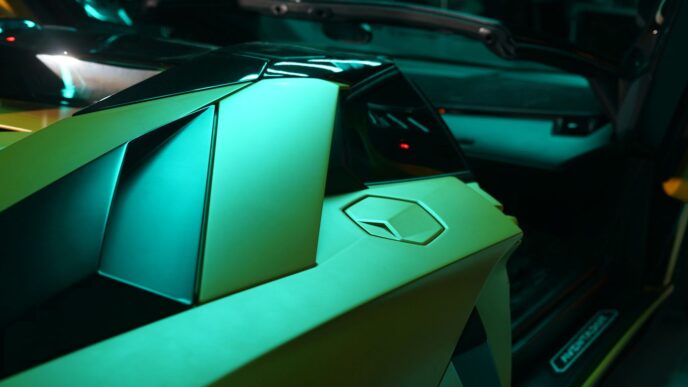P3 Mobility’s Vision for Autonomous Electric Vehicles
P3 Mobility is really pushing the envelope when it comes to self-driving electric cars. They’re not just thinking about the vehicles themselves, but the whole system needed to make them work. This includes setting up special places for these robotaxis to operate and providing the services that go along with them. It’s a big undertaking, but they seem to have the right people involved. The company was actually started by some big names in the automotive world, including Mate Rimac, who’s also behind Rimac Automobili and Bugatti Rimac. That kind of backing definitely helps.
They’ve also managed to get some serious money to help them grow. In 2024, P3 Mobility brought in a cool €100 million from investors. This funding came from a mix of places, like Kia and TASARU Mobility Investments. Plus, the European Commission chipped in with a grant of €179.5 million back in 2023. It shows that a lot of people believe in what P3 Mobility is trying to do.
Here’s a quick look at their setup:
- Robotaxis: Developing the actual autonomous vehicles.
- Specialized Infrastructure: Building the necessary support systems for these vehicles.
- Mobility Services: Creating the services that users will interact with.
P3 Mobility is aiming to create a complete ecosystem for autonomous electric transport.
Advancing Connected Vehicle Technology
Connected vehicles are really changing how we think about driving. It’s not just about getting from point A to point B anymore. These cars are packed with sensors and software that let them talk to everything around them. Think of it like the car having its own set of eyes and ears, constantly sharing information to make the roads safer and traffic flow better. This interconnectedness is the backbone of future mobility.
Shaping the Software-Defined Vehicle
The idea of a software-defined vehicle means the car’s capabilities are largely determined by its software, not just its hardware. This is a big shift. It means your car can get better over time through updates, much like your smartphone. P3 Mobility is focused on this, building vehicles where software plays the starring role. This allows for:
- Over-the-Air (OTA) Updates: Just like your phone gets new features and security patches, cars can receive software updates wirelessly. This means new driving functions, improved performance, and bug fixes can be delivered without a trip to the dealership.
- Personalized Experiences: Software allows for deep customization. From infotainment settings to driving assist preferences, the car can adapt to individual drivers.
- New Service Integration: As software evolves, new services can be added. This could range from advanced navigation with real-time traffic to in-car entertainment options.
Innovations in Infotainment and Services
Beyond just getting you from here to there, connected cars are becoming mobile living spaces. P3 Mobility is looking at how to make the in-car experience richer. This includes:
- Advanced Infotainment Systems: Think intuitive touchscreens, voice control that actually works, and integration with your favorite apps. The goal is to make the cabin a place where you can work, relax, or be entertained.
- Contextual Services: Imagine your car knowing you’re approaching a traffic jam and suggesting an alternate route with a nearby coffee shop that has availability. These are the kinds of smart, context-aware services that connected technology enables.
- Remote Access and Control: Through a mobile app, you can check your car’s status, pre-condition the cabin temperature, or even locate it in a large parking lot. It’s about extending the car’s utility beyond the drive itself.
Ensuring Cyber Security and Over-the-Air Updates
With all this connectivity comes a big responsibility: keeping things secure. When cars can communicate wirelessly and receive updates, they become potential targets for cyber threats. P3 Mobility takes this very seriously. They are building systems with security in mind from the ground up. This involves:
- Robust Encryption: Protecting the data that travels between the car, the network, and other devices.
- Secure OTA Processes: Making sure that only authorized and verified software updates can be installed on the vehicle.
- Continuous Monitoring: Actively watching for any unusual activity or potential security breaches.
It’s a complex challenge, but it’s absolutely necessary for building trust in autonomous and connected vehicles. The ability to quickly patch vulnerabilities through OTA updates is a game-changer for security, but it has to be done right.
P3 Mobility’s Role in Smart Charging and EV Economics
When we talk about electric cars, a big part of the puzzle is how they charge and how that fits into the bigger economic picture. P3 Mobility is looking at this from a few angles. They’ve put out some thoughts on how smart charging can really change the game for EV economics. It’s not just about plugging in your car anymore; it’s about making that process work better for everyone involved, from the car owner to the power grid.
Revolutionizing Electric Vehicle Economics
P3 Mobility sees smart charging as a way to make electric vehicles more financially sensible. Think about it: if charging can be managed when electricity is cheaper or when there’s less demand on the grid, that saves money. This isn’t just a small perk; it can make a real difference in the overall cost of owning an EV. They’ve even worked with others on white papers exploring these market shifts and investment trends. The integration of EV charging into a connected, smart environment is becoming a really important piece of the puzzle.
Integrating EV Charging into Smart Environments
This is where things get interesting. P3 Mobility is exploring how EV charging can become part of a larger smart ecosystem. Imagine your car not just charging, but also communicating with your home’s energy system or even the local power grid. This two-way communication can help balance energy loads, which is a big deal as more EVs come online. It could mean:
- Demand Response: EVs can be programmed to charge during off-peak hours or even send power back to the grid during peak demand, helping to stabilize it.
- Grid Services: Charging stations could offer services to the grid, like frequency regulation, creating new revenue streams.
- Optimized Charging: Using data and AI to determine the best time and rate to charge based on electricity prices, grid conditions, and user needs.
Market Developments and Investment Activity
Because this area is so dynamic, P3 Mobility keeps a close eye on what’s happening in the market. They look at where investments are going and what new technologies are emerging. This helps them understand the trends and how to best position themselves and their partners. It’s a fast-moving field, and staying informed is key to making smart decisions about the future of EV charging and its economic impact.
The Future of Logistics with Teleoperation
Cost Efficiency Through Driverless Logistics
Think about how much it costs to have a person drive a truck or a delivery van all day. There’s salary, benefits, breaks, and the inevitable downtime. Teleoperation, which is basically controlling vehicles from afar using a mobile network, is starting to change that. It’s not quite full self-driving for every situation yet, but for a lot of the routine stuff in logistics, it makes a lot of sense. This technology offers a real chance to cut down on operational expenses for companies moving goods. Imagine a fleet of delivery vehicles that can be managed by a few remote operators, especially for tasks that are predictable and don’t require complex decision-making on the fly.
Remote Control for Standardized Driving Tasks
So, what kind of driving tasks are we talking about here? It’s mostly about the repetitive, predictable stuff. Think about moving vehicles around a depot, shuttling them between loading docks, or even handling simple delivery routes in areas where the road network is well-mapped and straightforward. It’s about taking the human element out of the most monotonous parts of the job. This allows companies to focus their human resources on more complex issues or customer interactions. It’s a way to use technology to smooth out the rough edges of daily operations.
Developing a Teleoperation-as-a-Service Model
Because not every company can build its own teleoperation system from scratch, there’s a growing idea to offer this as a service. Think of it like cloud computing, but for controlling vehicles. Companies could subscribe to a service that provides the software, the network infrastructure, and maybe even the trained operators. This makes the technology accessible to smaller businesses too, not just the big players. It’s about making advanced logistics tools available to a wider market, helping everyone move goods more efficiently. The goal is to create a flexible system that companies can tap into as needed, without huge upfront investment.
Addressing Electric Vehicle Performance Challenges
Electric cars are pretty neat, but let’s be real, they’ve got their quirks. We’ve all heard stories, or maybe even experienced it ourselves, where an EV just doesn’t perform like you’d expect, especially when the weather gets rough. P3 Mobility is digging into these issues to make EVs more reliable for everyone.
Understanding Range and Charging Behavior
One of the biggest concerns people have with electric cars is how far they can go on a single charge and how quickly they can refuel. It’s not always as straightforward as the manufacturer’s claims. Factors like how you drive, the terrain, and even the outside temperature play a huge role. P3 Mobility is working to demystify these variables so drivers have a clearer picture of what to expect. This means looking at real-world data, not just lab tests, to understand how things like aggressive acceleration or climbing steep hills affect battery life. Similarly, charging speed can vary wildly. It’s not just about the charger’s power output; the car’s battery management system and its current temperature are big players too.
The Impact of Low Temperatures on EVs
Winter is coming, and for EVs, that can mean a noticeable dip in performance. Cold weather really messes with battery chemistry. It makes the battery less efficient, meaning you get less energy out of it. This translates directly to reduced driving range. Plus, charging can slow down considerably when it’s freezing outside. Think of it like trying to run a marathon in a blizzard – it’s just harder. P3 Mobility recognizes this challenge and is investigating the specific ways cold impacts battery performance and charging rates.
P3’s Study on Cell Behavior and Preconditioning
To get a handle on these cold-weather issues, P3 Mobility has conducted studies looking closely at how individual battery cells behave under different temperature conditions. They’ve gathered actual test data to see what’s really going on inside the battery pack when it’s chilly. This research is key to understanding why EVs might not be hitting their advertised range or charging as fast as expected during colder months. Based on this, they’re exploring solutions like preconditioning, which is essentially warming up the battery before you start driving or charging. This proactive step can make a big difference in getting closer to optimal performance, even when the mercury drops.
Here’s a look at some general impacts:
- Reduced Range: Expect a noticeable decrease in how far you can drive, sometimes by 20-30% or more in very cold conditions.
- Slower Charging: Even with a fast charger, the battery might take longer to accept a charge as it needs to warm up first.
- Cabin Heating: Running the heater uses energy that would otherwise go to the wheels, further impacting range.
- Battery Management System (BMS) Adjustments: The car’s internal computer will actively manage the battery to protect it, which can sometimes limit power output.
P3 Mobility’s Impact on Transportation Infrastructure
P3 Mobility isn’t just thinking about the cars themselves; they’re also looking at how these vehicles will fit into the bigger picture of how we get around. It’s about building the roads, the charging stations, and the whole system that makes autonomous electric cars a reality. They’re involved in developing cutting-edge infrastructure that supports this new era of transportation.
Think about it – autonomous vehicles need a different kind of support than what we have now. This includes everything from specialized charging hubs to communication networks that let cars talk to each other and to the city. P3 Mobility is working on these foundational pieces.
Cutting-Edge Infrastructure Development
P3 Mobility is at the forefront of creating the physical and digital infrastructure needed for autonomous electric vehicles. This isn’t just about putting charging stations everywhere, though that’s part of it. It’s about designing systems that can handle a high volume of electric vehicles, manage their charging needs efficiently, and communicate with them in real-time.
- Smart Charging Networks: Developing systems that can charge fleets of autonomous vehicles quickly and intelligently, perhaps even using off-peak hours to save energy and costs.
- Vehicle-to-Infrastructure (V2I) Communication: Building the communication links that allow cars to ‘talk’ to traffic lights, road sensors, and other city systems. This helps optimize traffic flow and improve safety.
- Specialized Hubs: Creating dedicated areas for autonomous vehicles to charge, be maintained, and perhaps even swap batteries, making operations smoother and more efficient.
Autonomous Vehicles in Texas
Texas is becoming a key testing ground for autonomous vehicle technology, and P3 Mobility is part of this movement. The state’s vast open spaces and forward-thinking regulations make it an ideal location to test and deploy these advanced vehicles. P3 Mobility’s work here contributes to understanding how autonomous fleets can operate effectively in diverse environments, from urban centers to more spread-out areas.
EV Vertiports and Mass Transit Solutions
Beyond just cars on the road, P3 Mobility is also exploring how autonomous electric vehicles can integrate with other forms of transport. This includes looking at concepts like EV vertiports, which could serve as hubs for electric air taxis and connect them to ground-based autonomous transport networks. They are also considering how autonomous technology can improve existing mass transit systems, making them more reliable and efficient for everyone.
Looking Ahead
So, what does all this mean for the future of getting around? P3 Mobility, with its focus on self-driving electric cars, is really pushing things forward. They’re not just building cars; they’re thinking about the whole system – how cars talk to each other, how they charge, and how they fit into our cities. It’s a big project, and they’ve got some serious backing, which tells you they’re on to something. We’re seeing a lot of smart people and companies working on these kinds of ideas, from charging tech to how cars use software. It feels like we’re on the edge of some big changes, and P3 is definitely a company to keep an eye on as we move towards a more connected and electric way to travel.

